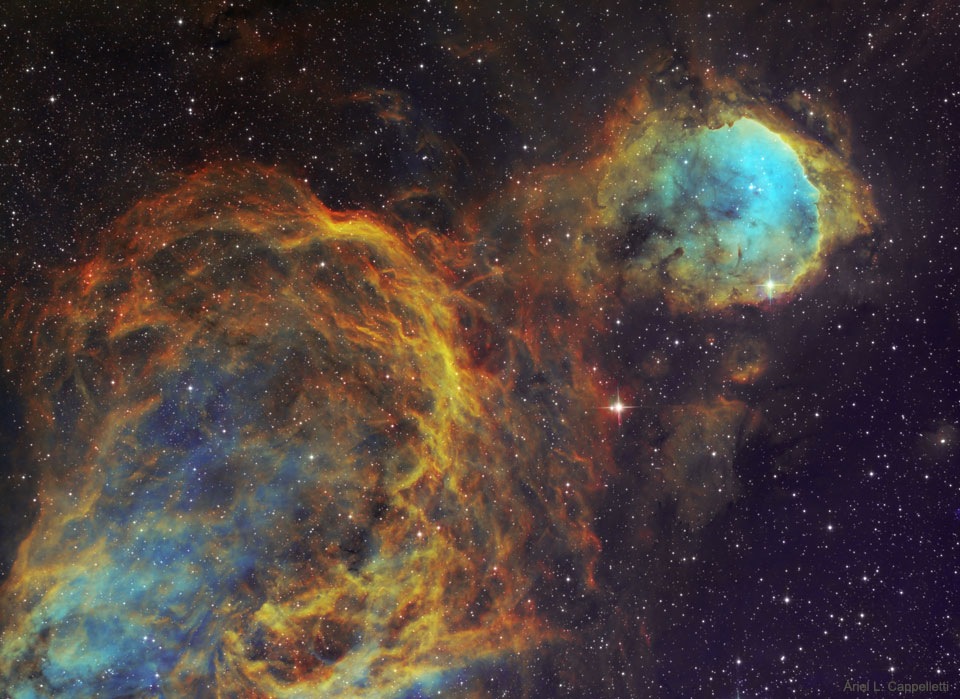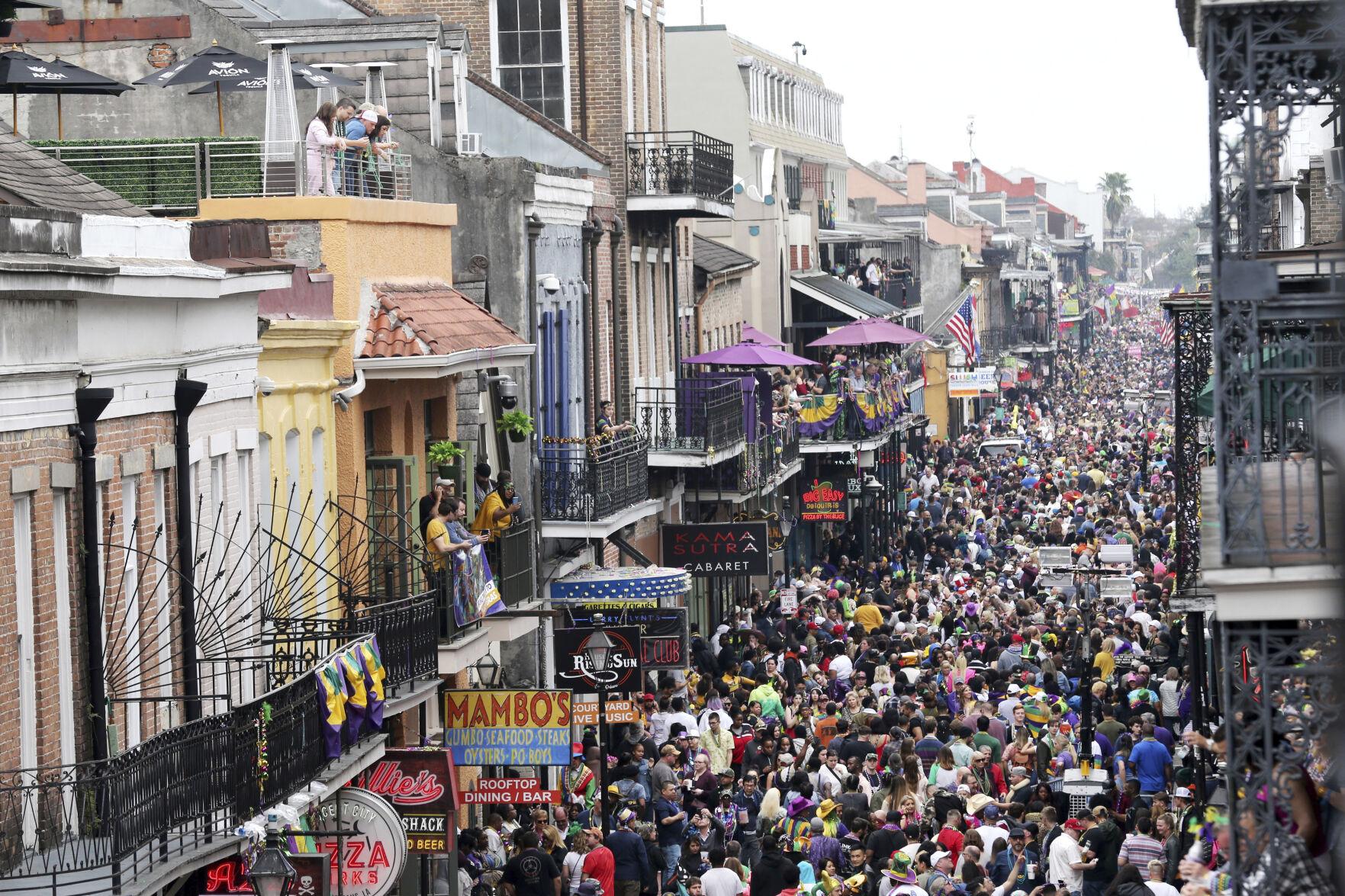Blog
mick performing Rastaman Chant and So Much Trouble in the World Nyabinghi Style
more...Edward Ray Sharpe (born February 8, 1938) is an American R&B and rockabilly singer, guitarist, and songwriter. Many of his recordings, including his best-known, “Linda Lu”, are sometimes classed as rockabilly – he was described by one record producer as “the greatest white-sounding black dude ever”
more...
With interstellar gas as a canvas, a massive and tumultuous Wolf-Rayet star has created the picturesque ruffled half-circular filaments called WR32, on the image left. Additionally, the winds and radiation from a small cluster of stars, NGC 3324, have sculpted a 35 light year cavity on the upper right, with its right side appearing as a recognizable face in profile. This region’s popular name is the Gabriela Mistral Nebula for the famous Chilean poet. Together, these interstellar clouds lie about 8,000 light-years away in the Great Carina Nebula, a complex stellar neighborhood harboring numerous clouds of gas and dust rich with imagination inspiring shapes. The featured telescopic view captures these nebulae’s characteristic emission from ionized sulfur, hydrogen, and oxygen atoms mapped to the red, green, and blue hues of the popular Hubble Palette.

John Towner Williams (born February 8, 1932) is an American composer, conductor, pianist and trombonist. Regarded by many as one of the greatest film composers of all time, he has composed some of the most popular, recognizable, and critically acclaimed film scores in cinematic history in a career that has spanned over six decades. Williams has won 25 Grammy Awards, seven British Academy Film Awards, five Academy Awards, and four Golden Globe Awards. With 52 Academy Award nominations, he is the second most-nominated individual, after Walt Disney. In 2005, the American Film Institute selected Williams’s score to 1977’s Star Wars as the greatest film score of all time. The Library of Congress also entered the Star Wars soundtrack into the National Recording Registry for being “culturally, historically, or aesthetically significant”.
Williams has composed for many critically acclaimed and popular movies, including the Star Wars saga, Jaws, Close Encounters of the Third Kind, Superman, E.T. the Extra-Terrestrial, Home Alone, the Indiana Jones films, the first two Jurassic Park films, Schindler’s List, and the first three Harry Potter films. Williams has also composed numerous classical concertos and other works for orchestral ensembles and solo instruments. He served as the Boston Pops‘ principal conductor from 1980 to 1993 and is its laureate conductor. He has been associated with director Steven Spielberg since 1974, composing music for all but five of his feature films. Other works by Williams include theme music for the 1984 Summer OlympicGames, NBC Sunday Night Football, “The Mission” theme used by NBC News and Seven News in Australia, the television series Lost in Space and Land of the Giants, and the incidental music for the first season of Gilligan’s Island. Williams was inducted into the Hollywood Bowl‘s Hall of Fame in 2000, and received a Kennedy Center Honor in 2004 and the AFI Life Achievement Award in 2016. He has composed the score for eight of the top 25 highest-grossing films at the U.S. box office (adjusted for inflation). His work has influenced other film composers and contemporary classical and popular music. Marcus Paus argues that Williams’ “satisfying way of embodying dissonance and avant-garde techniques within a larger tonal framework” makes him “one of the great composers of any century.”
more...Fatma Ahmed Kamal Shaker (Arabic: فاطمة أحمد كمال شاكر), better known by her stage name Shadia (Arabic: شادية, Shādiyya; 8 February 1931 – 28 November 2017), was an Egyptian actress and singer. She was famous for her roles in light comedies and drama in the 1950s and 1960s. She is one of the iconic actresses and singers in Egypt and the middle east region and a symbol of the golden age of Egyptian cinema and is known of her many patriotic songs. Her movies and songs are popular in Egypt and all the Arab World. Critics consider her the most successful comprehensive Egyptian and Arabic artist of all time. Her first appearance in a film was in “Azhar wa Ashwak” (Flowers and Thorns), and her last film was “La Tas’alni Man Ana” (Don’t Ask Me Who I Am). She is also known for her patriotic song “Ya Habibti Ya Masr” (Oh Egypt, My Love) and her breakthrough leading role in the Egyptian movie “Al Maraa Al Maghoula” (The Unknown Woman). Six of her movies are listed in the top 100 Egyptian movies of the 20th century. In April 2015, she became the first actress to be awarded an honorary doctorate by the Egyptian Academy of Arts. She was given the nickname “Idol of the Masses” following her successful movie “Maaboudat El Gamaheer” (Idol of the Masses). Other notable nicknames include “The Guitar of the Arabic Singing” (Egyptian Arabic: قيثارة الغناء العربى) and “The Golden Guitar” (Egyptian Arabic: القيثارة الذهبية).
more...Eddie Locke (August 2, 1930 – September 7, 2009) was an American jazz drummer.
Eddie Locke was a part of the fertile and vibrant Detroit jazz scene during the 1940s and 1950s, which brought forth many great musicians including the Jones brothers (Hank, Thad, and Elvin), Kenny Burrell, Lucky Thompson, Tommy Flanagan, Barry Harris, and so many others. He eventually formed a variety act with drummer Oliver Jackson called Bop & Locke which played the Apollo Theater. He moved to New York City in 1954, and worked there with Dick Wellstood, Tony Parenti, Red Allen, Willie “The Lion” Smith, and Teddy Wilson amongst others. During this time he came under the tutelage of the great Jo Jones, and eventually became known as a driving and swinging drummer who kept solid time and supported the soloist. During the late 1950s he formed two of his most fruitful musical relationships, one with Roy Eldridge, and the other with Coleman Hawkins. His recording debut came with Eldridge in 1959 on “On The Town”. He later became a member of the Coleman Hawkins Quartet in the 1960s along with pianist Tommy Flanagan and bassist Major Holley. That group made many fine records including the exquisite album “Today and Now”, in 1963. Throughout the 1970s, he played with Roy Eldridge at Jimmy Ryan’s in Manhattan, and wound out his career freelancing, as well as teaching youngsters at the Trevor Day School on Manhattan’s upper west side.
Eddie died on Monday morning, September 7, 2009, in Ramsey, New Jersey.
more...Alonzo “Lonnie” Johnson (February 8, 1899 – June 16, 1970) was an American blues and jazz singer, guitarist, violinist and songwriter. He was a pioneer of jazz guitar and jazz violin and is recognized as the first to play an electrically amplified violin.
Johnson was born in New Orleans, Louisiana, and raised in a family of musicians. He studied violin, piano and guitar as a child and learned to play various other instruments, including the mandolin, but he concentrated on the guitar throughout his professional career. “There was music all around us,” he recalled, “and in my family you’d better play something, even if you just banged on a tin can.
more...Mardi Gras and the weekend leading up to it will look quite different in New Orleans this year amid the lingering coronavirus pandemic.
Mayor LaToya Cantrell announced new restrictions starting next Friday, Feb. 12, and lasting through the Mardi Gras holiday on Feb. 16 as part of a citywide plan to crack down on crowds to prevent the spread of COVID-19.
The biggest new restriction? The closing of all bars in the city. Also included were guidelines on where people can and cannot gather during the time the rules are in effect.
All New Orleans bars closed for Mardi Gras, access restricted to major streets under new rules
- CITYWIDE: All bars will be closed for indoor and outdoor service; the sale of to-go drinks is not allowed.
- FRENCH QUARTER: The sale of packaged liquor will be prohibited.
- BOURBON STREET*: Bourbon Street will be closed at night from 7 p.m.-3 a.m. to both vehicles and pedestrians. Loitering is not allowed.
- FRENCHMEN STREET*: Frenchmen Street will be closed at night from 7 p.m.-3 a.m. to both vehicles and pedestrians. Loitering is not allowed.
- DECATUR STREET*: Decatur Street will be closed at night from 7 p.m.-3 a.m. to both vehicles and pedestrian with no loitering allowed.
- CLAIBORNE CORRIDOR: The Claiborne Underpass will be fenced off from St. Louis Street to St. Bernard Avenue and loitering is not allowed. Large gatherings are banned including things that encourage people to congregate, like street performances.
- OTHER: NOPD Superintendent Shaun Ferguson said there will be an increased police presence at the above locations, along with Magazine Street and St. Charles Avenue.

Written by Earl King
more...This cluster, known as M53 and cataloged as NGC 5024, is one of about 250 globular clusters that survive in our Galaxy. Most of the stars in M53 are older and redder than our Sun, but some enigmatic stars appear to be bluer and younger. These young stars might contradict the hypothesis that all the stars in M53 formed at nearly the same time. These unusual stars are known as blue stragglers and are unusually common in M53. After much debate, blue stragglers are now thought to be stars rejuvenated by fresh matter falling in from a binary star companion. By analyzing pictures of globular clusters like the featured image taken by the Hubble Space Telescope, astronomers use the abundance of stars like blue stragglers to help determine the age of the globular cluster and hence a limit on the age of the universe. M53, visible with a binoculars towards the constellation of Bernice’s Hair (Coma Berenices), contains over 250,000 stars and is one of the furthest globulars from the center of our Galaxy.

Milton “Milt” Holland (born Milton Olshansky; February 7, 1917 – November 4, 2005) was an American drummer, percussionist, ethnomusicologist, and writer in the Los Angeles music scene. He pioneered the use of African, South American, and Indian percussion styles in jazz, pop and film music, traveling extensively in those regions to collect instruments and learn styles of playing them.
Holland was born Milton Olshansky in Chicago, Illinois, where he attended Theodore Roosevelt High School. His first instrument was the violin. He pursued a passion for percussion, playing in clubs and shows and on CBS Radio in Chicago. By the age of twelve, he was playing at speakeasies for the likes of Al Capone. In the early 1940s, Holland toured and recorded with The Raymond Scott Orchestra. He studied tabla at UCLA and with Ramnad Easwaran. In India, Holland studied with tabla master Chatur Lal beginning in 1963. He traveled through India extensively in the early 1960s and 1970s, then spent many years in Africa studying tribal rhythms. He was among the first to introduce the instruments to western recording.
After moving to Los Angeles in 1946, he played on countless jazz and pop albums, film and TV scores. A sampling of the artists he worked with includes Frank Sinatra, Bing Crosby, the Beatles, the Rolling Stones, Chaka Khan, John Williams, Leonard Bernstein, Elmer Bernstein, Quincy Jones, Nat King Cole, Henry Mancini, Loggins and Messina, James Taylor, Ella Fitzgerald, Laurindo Almeida, Ry Cooder, Bonnie Raitt, Seals and Crofts, Ray Manzarek, Michael Dinner, Gordon Lightfoot, Ringo Starr, Kenny Loggins, Jim Messina, Poco, Captain Beefheart, David Blue, Rita Coolidge, Carly Simon, Cal Tjader, the Doobie Brothers, Little Feat, Maria Muldaur, Randy Newman, and Joni Mitchell. He played pandeiro, congas and triangle on Mitchell’s hit Big Yellow Taxi and congas and percussion on Light My Fire with José Feliciano.
more...
Curtis Ousley (born Curtis Montgomery; February 7, 1934 – August 13, 1971), known professionally as King Curtis, was an American saxophonist who played rhythm and blues, jazz, and rock and roll. A bandleader, band member, and session musician, he was also a musical director and record producer. Adept at tenor, alto, and soprano saxophone, he played riffs and solos on hit singles such as “Respect” by Aretha Franklin, and “Yakety Yak” by The Coasters and his own “Memphis Soul Stew”.
Curtis Montgomery was born in Fort Worth, Texas, the son of Ethel Montgomery, and was adopted, with his sister Josephine Allen (died 2019), by Josie and William Ousley. Curtis attended I.M. Terrell High School, and studied and performed music with schoolmate Ornette Coleman.
Curtis was stabbed on August 13, 1971, during an argument with a pair of drug dealers he discovered on the steps outside his Manhattan apartment. Curtis was attempting to carry an air conditioner into his apartment when Juan Montanez refused to move from the entrance. A fight ensued and Montanez stabbed Curtis. Curtis was transferred to Roosevelt Hospital, where he died.
more...Earl Silas Johnson IV (February 7, 1934 – April 17, 2003), known as Earl King, was an American singer, guitarist, and songwriter, most active in blues music. A composer of blues standards such as “Come On” (covered by Jimi Hendrix, Freddy King, Stevie Ray Vaughan) and “Big Chief” (recorded by Professor Longhair), he was an important figure in New Orleans R&B.
King was born in New Orleans, Louisiana, United States. His father was a piano player. He died when Earl was still a baby, and Earl was brought up by his mother. With his mother, he started going to church at an early age. In his youth he sang gospel music, but he took the advice of a friend to switch to blues to make a better living.
King started to play the guitar at the age of 15. Soon he started entering talent contests at local clubs, including the Dew Drop Inn. At one such club he met his idol, Guitar Slim. King started imitating Slim, and his presence had a big impact on his musical direction. In 1954, Slim was injured in an automobile accident (right around the time he had the number 1 R&B hit “The Things That I Used To Do”), and King was deputized to continue a tour with Slim’s band, representing himself as Slim. After succeeding in this role, King became a regular at the Dew Drop Inn.
His first recording was made in 1953. As Earl Johnson, he released a 78-rpm record, “Have You Gone Crazy”/”Begging at Your Mercy”, for Savoy Records. The following year, the talent scout Johnny Vincent introduced King to Specialty Records, for which he recorded some sides, including “Mother’s Love”, which was locally popular. In 1955, King signed with Vincent’s label, Ace. His first single for that label, “Those Lonely, Lonely Nights”, was a hit, reaching number 7 on the Billboard R&B chart. He continued to record for Ace for the next five years. During that time, he also he started writing songs for other artists, such as Roland Stone and Jimmy Clanton.
more...James Hubert “Eubie” Blake (February 7, 1887 – February 12, 1983) was an American pianist, lyricist, and composer of ragtime, jazz, and popularmusic. In 1921, he and his long-time collaborator Noble Sissle wrote Shuffle Along, one of the first Broadway musicals to be written and directed by African Americans. Blake’s compositions included such hits as “Bandana Days”, “Charleston Rag”, “Love Will Find a Way”, “Memories of You” and “I’m Just Wild About Harry“. The 1978 Broadway musical Eubie! showcased his works.
Eubie Blake was born February 7, 1887, at 319 Forrest Street, in Baltimore, Maryland. Of the eight children born to former slaves Emily “Emma” Johnstone and John Sumner Blake, he was the only one to survive infancy. John Blake was a stevedore on the Baltimore Docks.
Blake claimed in later life to have been born in 1883, but records published beginning in 2003—U.S. Census, military, and Social Security records and Blake’s passport application and passport—uniformly give his birth year as 1887.
Blake’s musical training began when he was four or five years old. While out shopping with his mother, he wandered into a music store, climbed on the bench of an organ, and started “foolin’ around”. When his mother found him, the store manager said to her, “The child is a genius! It would be criminal to deprive him of the chance to make use of such a sublime, God-given talent.” The Blakes purchased a pump organ for US$75.00, making payments of 25 cents a week.
more...More Posts
- Oscar Pettiford Day
- Buddy Rich Day
- World Music with Pen Cayetano
- Daily Roots with Shinobi Warrior & Echo Ranks
- The Cosmos with NGC 1313
- Jean-Luc Ponty Day
- Jerry Lee Lewis Day
- World Music with Djelimady Tounkara
- Daily Roots with Horace Martin
- Happy Birthday Mario!
- Shabbat for the Soul at Mt Zion Temple
- The Cosmos with NGC 157
- Kenny Kirkland Day
- Koko Taylor Day
- John Gilmore Day
- World Music with Rafael Riqueni
- Daily Roots with George Allison
- The Cosmos with IC 434
- Red Rodney Day
- Bud Powell Day
